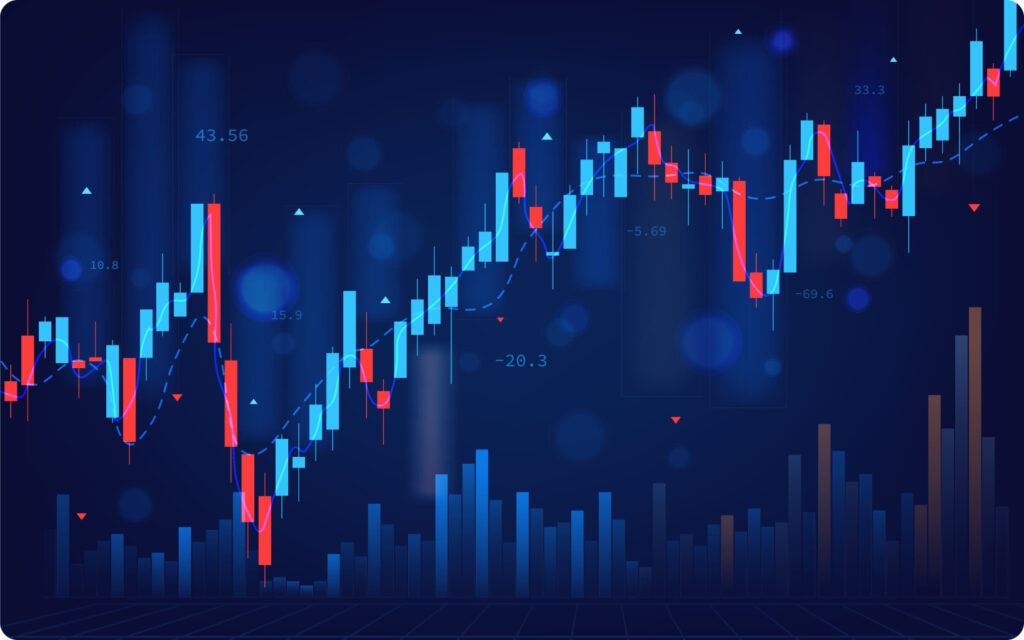
There are many different trading strategies that investors and traders use to navigate the financial markets, each with its own approach to analyzing and profiting from price movements. While some methods focus on understanding a company’s value or market sentiment, others rely on technical charts, mathematical models or specific market events. In this article, we explore a range of trading strategies, including fundamental and technical analysis, as well as more specialized techniques like quantitative, momentum, and arbitrage trading. Understanding these methods can help traders choose the strategy that best suits their goals and risk tolerance.
Fundamental Analysis
Fundamental analysis involves looking at a company’s actual business and financial performance to figure out its real value. Traders examine things like financial reports, company news and broader economic trends. The goal is to find out if a stock is undervalued or overvalued, expecting that over time, the price will adjust to match its true value.
Example: A trader might buy shares in a company because its earnings are growing, even though the stock price is currently low.
Technical Analysis
Technical analysis is about studying past price movements and charts to predict future prices. Traders use patterns, trends and indicators (for example moving averages or RSI) to decide when to buy or sell. They believe that history repeats itself in the market and therefore similar patterns can signal future price movements.
Example: A trader might buy a stock when its price moves above its average price over the last 50 days, as this suggests the stock is gaining momentum.
Quantitative Trading
Quantitative trading uses math and statistics to make trading decisions. Computers and algorithms are often used to analyze large amounts of data and automatically place trades. This strategy is particularly common for very fast trades, sometimes completed in just milliseconds.
Example: A quant trader might develop a computer program that buys and sells stocks based on specific price patterns and market trends, executing hundreds of trades in a short time.
Sentiment Trading
Sentiment trading is based on understanding how other investors feel about the market. Traders analyze emotions by looking at news, social media, or market indicators like the VIX (which measures fear in the market) to figure out if people are optimistic or pessimistic about an asset.
Example: If many investors are excited about a new product from a company, a sentiment trader might buy the company’s stock, expecting the price to go up.
Event-Driven Trading
Event-driven trading focuses on taking advantage of price changes caused by specific events, such as a company releasing its earnings report, a merger or a new product launch. Traders predict how these events will impact the stock price and trade accordingly.
Example: A trader might buy a company’s stock before its earnings report, anticipating that the results will be positive and cause the stock price to rise.
Position Trading
Position trading is for those who hold onto their investments for a long time, from weeks to months or even years. These traders look at big-picture trends and are not worried about daily market changes. They often use a mix of fundamental analysis and some technical indicators to guide their trades.
Example: A trader might hold onto a stock for months because they believe the company will grow in value over time.
Swing Trading
Swing trading is about capturing medium-term price changes, typically over a few days or weeks. Swing traders often use charts and patterns to decide when to enter or exit trades, aiming to profit from price swings within a trend.
Example: A swing trader might sell a stock after it rises quickly, believing the price will soon fall back down.
Day Trading
Day traders buy and sell stocks within the same day, closing all positions before the market closes to avoid overnight risk. They focus on short-term price movements and often make many trades in a single day. It requires quick decision-making and a lot of focus on the market.
Example: A day trader might buy a stock in the morning and sell it by the afternoon if the price rises during the day.
Scalping
Scalping is a very fast form of day trading where traders make many small trades throughout the day, aiming to profit from tiny price movements. Scalpers hold positions for just seconds or minutes and often trade in very liquid markets, like major currencies or stock indices.
Example: A scalper might make several trades within a few minutes, each time profiting from a small increase in price.
Momentum Trading
Momentum trading is based on the idea that when a stock is moving strongly in one direction, it will keep moving that way for a while. Traders look for stocks that are rapidly going up or down and jump in to ride the momentum, exiting before the trend reverses.
Example: A momentum trader might buy a stock after it breaks out of a range and starts rising fast, planning to sell once the rise slows down.
Arbitrage Trading
Arbitrage traders exploit price differences between different markets or exchanges to make a profit. They buy an asset in one market at a lower price and sell it in another market at a higher price, making money from the difference.
Example: A trader might buy a cryptocurrency at a lower price on one exchange and sell it on another exchange where the price is slightly higher, profiting from the price gap.
Statistical Arbitrage
Statistical arbitrage is about using statistical models to find short-term price differences between related assets. Traders look for pairs of assets that normally move together and trade them when they deviate from this relationship, expecting them to move back into alignment.
Example: A trader might notice that two stocks, which usually move in sync, are suddenly behaving differently. They might buy the underperforming stock and sell the overperforming one, betting that their prices will soon align again.
- More like this


